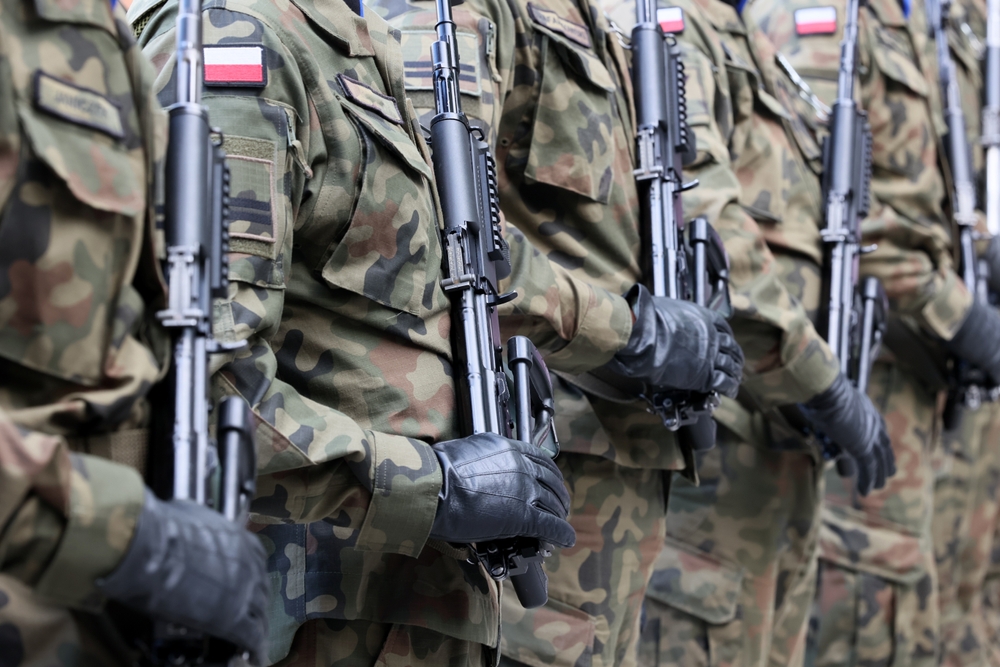
Tensions are rising on the eastern flank of NATO, close to the borders of Belarus and Russia, as the rhetoric about a possible military clash heats up. “The security situation in the East has been unstable for a longer period of time, and Poland has to cope with a whole spectrum of threats from this direction,” Polish Deputy Foreign Affairs Minister Arkadiusz Mularczyk told German publication Bild.
Poland, last week, announced that it would be moving up to 10,000 additional troops to the border with Belarus to support the border guard and—as Defence Minister Mariusz Błaszczak put it—“to scare away the aggressor so that it does not dare to attack us.” Warsaw believes Minsk—with the assistance of its ally, Moscow—is waging “hybrid warfare” against the eastern member nations of NATO and the European Union, partly by weaponising migration and partly by stationing thousands of Russian soldiers from the mercenary group Wagner in Belarus, close to the Polish border. Tensions were high when Belarusian military helicopters allegedly violated Polish airspace two weeks ago.
As AP’s analysis points out, Poland’s eastern border is a strategically important territory, especially the so-called Suwalki Gap—96 kilometres of border with Lithuania—that links the three Baltic states to the rest of the NATO alliance and the EU. The narrow gap also separates Belarus from Kaliningrad, a heavily militarised Russian exclave that has no land connection to Russia.

Russian President Vladimir Putin announced in June that Russia had moved a first batch of tactical nuclear weapons to Belarus, claiming they were placed there for deterrence. Russia has previously sent nuclear-capable Iskander missiles to Kaliningrad, but Western observers have questioned whether it actually has nuclear weapons stationed there.
Military analysts in the West view the Suwalki Gap as a potential flashpoint in any confrontation between Russia and NATO. They worry that Russia might try to seize the gap and cut off the three Baltic states. There are currently more than 10,000 American troops stationed in Poland, 1,000 German soldiers in Lithuania, and 800 Canadian forces in Latvia, with Berlin and Ottawa announcing thousands more to arrive in the next couple of years. The forces are part of NATO’s multinational battlegroups, set up after Russia annexed Crimea from Ukraine in 2014, and enhanced after Russia invaded Ukraine last year.
While the eastern members of NATO fear an attack by Russia or Belarus, officials in Moscow and Minsk believe the opposite to be true, even going as far as suggesting that Poland intends on annexing western regions of Ukraine. Belarusian Defence Minister Viktor Khrenin said that “the possibility of a direct military clash with NATO in the future is becoming more and more evident.” He justified his allegations by claiming:
In the capitalist world, nobody will tie their assets up in [long-term investments in costly] weaponry and in beefing up the ranks of the army for nothing.
Experts, however, disagree that the region is on the verge of conflict. “[Wagner forces] are in no way a threat to us,” Andrzej Kruczyński, a Polish security expert, told Lithuania’s public broadcaster LRT, suggesting that Poland’s ruling PiS party was likely using security concerns “to their advantage” amid upcoming elections.
Daniel Fried, the former U.S. ambassador to Poland, told Newsweek that the Wagner group would have no chance of successfully attacking Poland, pointing to the strength of the Polish military as well as the U.S. presence in the region. Similar comments were made by Ryhor Nizhnikau, a senior research fellow at the Finnish Institute on International Affairs, saying:
If Wagner mercenaries suddenly attacked Poland today, nothing much would remain of them.
Meanwhile, Kamil Kłysiński, from the Center for Eastern Studies in Warsaw, dismissed the idea that Poland was preparing to conquer Ukraine or Belarus, adding that Poland was only preparing to defend itself with additional troops at the border.
